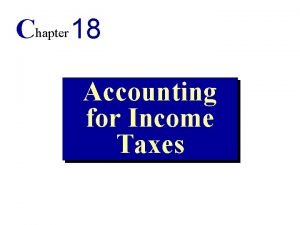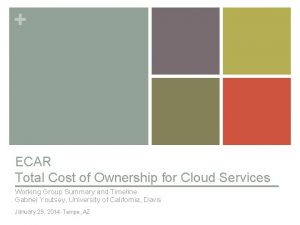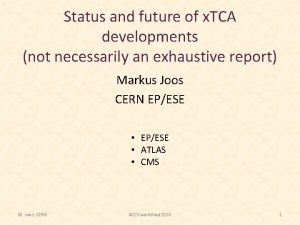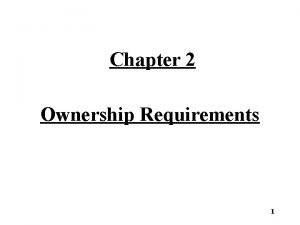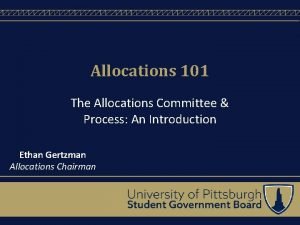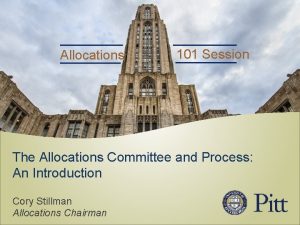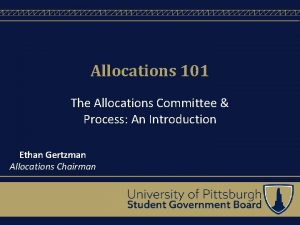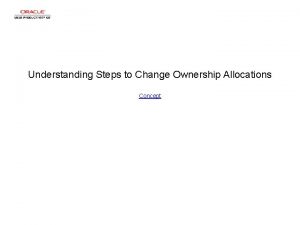Cost Allocations in Mixed Use Mixed Ownership Developments




















- Slides: 20

Cost Allocations in Mixed Use Mixed Ownership Developments American College of Real Estate Lawyers October 2014

Matthew J. Leeds Ganfer & Shore New York, New York Edward A. Peterson Winstead PC Dallas, Texas David Van Atta Hanna & Van Atta Palo Alto, California

Introduction • Types of mixed use structures • Model used for this presentation is a vertical high rise development with residential, retail, hotel and parking • Fundamental definitions


• Structure of Mixed Use Developments • Condominium Structures are the most common Uniform Condominium Act Uniform Common Interest Ownership Act First Generation Condominium Act Subdivision of Air Space *reminder that our presentation only deals with vertical developments— horizontal developments are left to another analysis

Legal Structure Hotel Unit Master Condominium Retail Unit Parking Unit Master Association (or Master Board) Residential Unit

• Governing Structure Generally an incorporated association of owners Control of the association Alternative for designated owner as manager/particularly if not a condominium but subdivision with REA

Parties Directly Affected by Cost Allocations Parties Indirectly Affected by Cost Allocations Title Insurers Owners of uses Property and Liability Lenders Insurance Providers Potential Owners of uses Municipalities and Equity Providers Regulators

Authority for allocation of common expenses • Statutory provisions • Contractual provisions • A combination of both

Factors that Affect how Common Expenses are Developed and Allocated • Operational Concerns Insurance Casualty, Condemnation and Restoration Creation of Budgets Capital Improvements; reserves Common interest percentages v. allocation methods Enforcement Mechanisms

What Expenses are Allocated • Expenses that are shared by uses • Expenses shared by less than all of the uses • Expenses only to one owner/user (e. g. elevator used only by one owner) • Expense of capital improvements

• Development of the Budget for Common Expenses (maintenance and repair, professional management, salaries, landscaping, utilities for common areas, professional fees, property, liability and D&O insurance coverage, etc. )

Allocation of Common Expenses • Developer is responsible for setting the method of allocation • Numerous ways to determine the method Method may be governed by a particular state’s statute The governing documents will control in absence of a statutory requirement or prohibition

• The default method is to allocate based on a percentage of ownership of total common elements • The default method may not be the best or most appropriate • Statutes and regulatory considerations vary as to what type of allocation is permitted and must initially be considered • An extensive list of allocation methods is set forth on pp 7 and 8 of our article

Allocation Document or “Matrix” Approach to Allocations • Practical Common Sense approach • Each owner has a precise responsibility for its expense and maintenance • Issues such as shared ownership, joint use, and exclusive use can be more easily addressed • Allocation when different from ownership and use can be addressed

• Costs of concierge services, porter, and doormen can be properly allocated to residential and hotel uses and not office and retail uses • Garage expenses can be properly allocated when there is a single owner with other owners using the garage, or when there is more than one owner with multiple users

• Expenses of shared amenities can be realistically allocated • Insurance costs can be better allocated • The process of delineating every line item of expense and assigning it to an owner is both deliberate and time consuming but will pay off in the long run • At all cost the “fair and reasonable” allocation process should be avoided

What Provisions should an Allocation Document Include? • A process for readjustment should be included (as no method is inherently correct forever) and can pour over into the dispute resolution process • The document may be required to be recorded in the real property records • The document can and usually does assign maintenance obligations to the owners • A form of Allocation Document and Matrix of expenses (for a residential over retail development) should be attached to the article

Assessments and Liens

Conclusion • mixed use developments are complex and include interwoven business and legal issues • use and ownership are not always the definitive way to allocate expenses for the common ownership portions of the project • statutory, regulatory, business concerns, practicality, and other legal concerns must be addressed by the developer and its counsel when the expense allocations are determined • we have presented a common sense practical solution in the Allocation-Matrix Approach, but there a number of approaches that developers may use to allocate expenses that may be more appropriate for their particular development
 Defense priorities and allocations system
Defense priorities and allocations system Intraperiod tax allocations
Intraperiod tax allocations Intraperiod tax allocations
Intraperiod tax allocations Crane allocations
Crane allocations Total cost of ownership in cloud computing
Total cost of ownership in cloud computing Total cost of ownership in procurement
Total cost of ownership in procurement Total cost of ownership voorbeeld
Total cost of ownership voorbeeld Recent developments in ict
Recent developments in ict Recent developments in object detection
Recent developments in object detection Sahelanthropus tchadensis cultural development brainly
Sahelanthropus tchadensis cultural development brainly Peter rosenwald
Peter rosenwald Political developments in the early republic
Political developments in the early republic Huron creek developments
Huron creek developments Chapter 11 political developments in the early republic
Chapter 11 political developments in the early republic What is surface development
What is surface development Transmission developments
Transmission developments In the colonial era developments such as the new england
In the colonial era developments such as the new england Target developments
Target developments Example of definition pattern of development
Example of definition pattern of development Two types of pattern development
Two types of pattern development Tca developments
Tca developments

